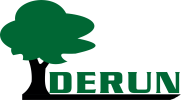Views: 1 Author: Site Editor Publish Time: 2024-04-06 Origin: Site











Coconut shell activated carbon is an activated carbon material made from coconut shells and has excellent adsorption properties. Coconut shell activated carbon can be used to remove residual chlorine, organic matter, heavy metals and various impurities in water.
The main features of coconut shell activated carbon include: - High specific surface area: Due to its porous structure, coconut shell activated carbon has a very large specific surface area, which can provide more adsorption sites, thereby increasing the adsorption capacity. - Good adsorption performance: Coconut shell activated carbon has high adsorption capacity for harmful substances such as residual chlorine, organic substances and heavy metals. - Renewability: Coconut shell activated carbon can be regenerated to extend its service life and reduce its impact on the environment.
The principle of coconut shell activated carbon to remove residual chlorine
Residual chlorine is a common disinfectant in tap water, which has certain effects on human health. Coconut shell activated carbon can remove residual chlorine in water mainly by utilizing its surface porous structure and adsorption properties. When water passes through coconut shell activated carbon, residual chlorine molecules will be adsorbed to the surface of the activated carbon, thereby effectively removing residual chlorine.
The process of removing residual chlorine by coconut shell activated carbon can be attributed to the following steps: 1. Surface diffusion: residual chlorine molecules first come into contact with the surface of coconut shell activated carbon, and then enter the internal pores of the activated carbon through molecular diffusion. 2. Pore adsorption: Residual chlorine molecules are adsorbed in the pores of activated carbon. As the adsorption sites increase, the adsorption amount of residual chlorine also increases. 3. Equilibrium and saturation: When the adsorption sites of activated carbon are saturated, the adsorption capacity of activated carbon reaches an equilibrium state, and the residual chlorine has been completely adsorbed.
What Are The Differences Between Impregnated Activated Carbon And Ordinary Activated Carbon?
Application of coal-based activated carbon in environmental protection field
The Principle And Effect of Activated Carbon Adsorption of Formaldehyde
Application of coal-based activated carbon in flue gas desulfurization and denitrification
